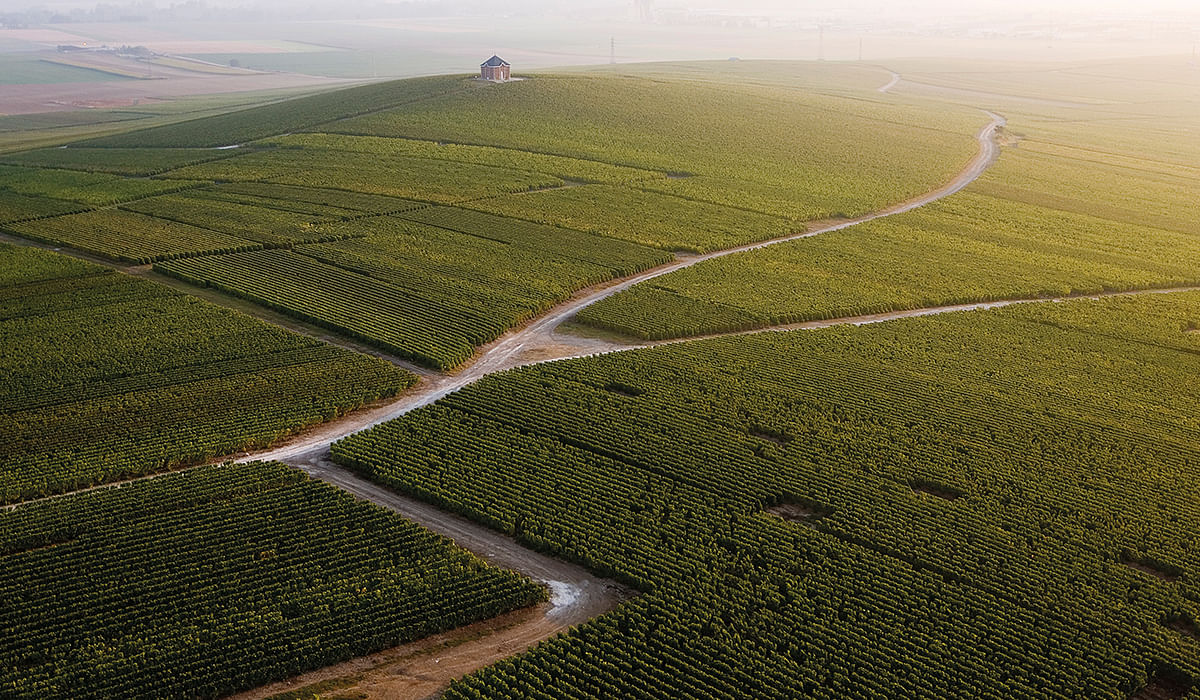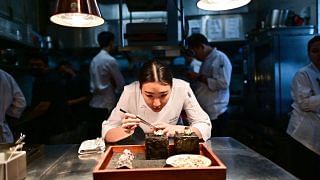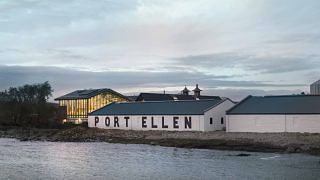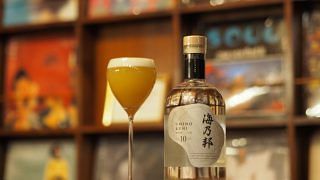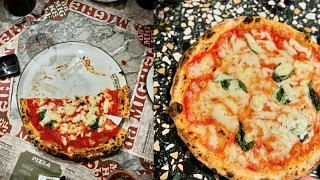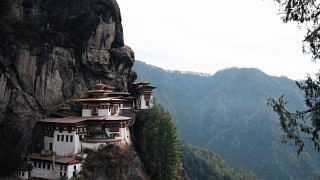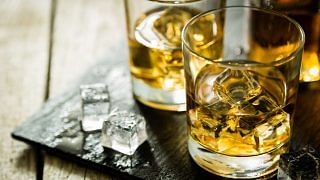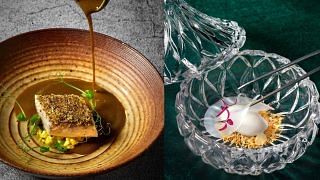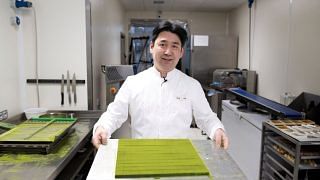It’s Sept 22 and I’m standing in the Mont Aigu vineyards in Oiry near Epernay on the Cote des Blancs with Veronique Bonnet, Moet & Chandon’s vineyards manager.
Harvest started not more than 10 days ago, marking the end of an incredibly complicated growing season. This year, spring frosts and hail battered the Champagne region’s chardonnay, pinot noir and meunier grape varieties, and the rain didn’t stop all summer, which made controlling downy mildew a serious concern.
(Related: Why wine from Wynns Coonawarra Estate is for those in the know)
Certain sectors were hard hit with significant shortfalls in output. Overall, Champagne’s winegrowers suffered a yield loss of nearly 30 per cent due to frost. Mildew claimed another 25 to 30 per cent. Bonnet also noted how harvests in the past used to take place in October. Now, it begins a month earlier in September. It was worse in 2020. Harvest began in August, breaking the record of the earliest ever start date – a clear sign of the impact global warming is having on viticulture.
In 2012, to mitigate the effects, Moet & Chandon inaugurated a space dedicated to 21st-century winemaking: an ultra-modern, sustainable and energy-efficient vat room in Mont Aigu that became France’s first site to be awarded the High Environmental Quality label. It also opened a R&D facility worth 20 million Euros (S$31.3 million) in the Champagne region to address topics such as microbiology to select and adapt yeasts, carbon sequestration in the fields and making grape varietals and rootstocks resistant to climate change and mildew.
Manufacturing about 35 million bottles annually, Moet & Chandon – recognised for its flagship, non-vintage Moet Imperial champagne that was originally invented to pay homage to its long-standing relationship with French Emperor Napoleon Bonaparte – is the leading producer of champagne today.
It is part of Moet Hennessy, the world’s largest luxury wines and spirits company owned by the LVMH Group. As it’s viewed as a global brand rather than a prestigious champagne producer, many often forget the important role it has played – and still does – in the history of Champagne. For example, it successfully fought off the devastating phylloxera plague of parasites living in the leaves and roots of vines in the late 19th century, and established a viticulture and oenology school and research institute to share its vine-growing knowledge in 1900.
One of its most influential leaders, Robert-Jean de Vogue, improved the social and working conditions of winegrowers years before others in France adopted similar obligations. It has always pioneered innovations, too. For example, in 1966, it became the first in Champagne to invest in stainless steel vats to improve wine fermentation and ageing processes. Last year, it presented its Living Soils sustainability initiative.
(Related: Primeur wines: Putting the ‘nouveau’ in Beaujolais Nouveau)
“As the leader in Champagne, we have the responsibility to do everything in our power to preserve nature and set an example for the entire region,” states Stanislas Milcent, Moet & Chandon’s quality and environment director. Owning the largest estate in Champagne today – 1,200ha of vineyards out of only 34,300ha in the well-guarded territory, along with 28km of underground cellars – the maison believes in caring for its terroir, the soil and its natural ecosystem, and learning from nature, on which it is dependent for its survival.
“Founded in 1743, Moet & Chandon has always believed that the exceptional quality of our champagnes owes much to the precious nature and soil that nurtures our grapevines,” notes Milcent. “It’s the source of our champagnes and the heart of our success. Our commitment to the preservation of nature and our vineyards for future generations has always been part of our philosophy. In 2000, we sped up sustainable viticultural practices because we could not stand by and watch the impact of climate change.”
Committed to sustainable viticulture for over 20 years, Moet & Chandon received ISO-14001 certification for all its sites and activities in 2007. Since 2014, all of its vineyards have been doubly certified for sustainable viticulture and high environmental value. “This certification, verified by the independent organisation Ocacia, has 99 criteria that range from soil and plant nutrition to management of vines and waste management,” explains Milcent. “Soil preservation is key for us. It contributes to the conservation of biodiversity and the coexistence of life with landscape elements, such as trees.
“On top of our 1,200ha of vineyards, we have another 469ha fully dedicated to the preservation of biodiversity with woodland hedges, forests and ponds. Each reserve contributes to fighting diseases and reducing water stress and temperature.”
In 1996, to regulate the insect population and decrease the influence of human activity on the natural ecosystem, it introduced a biological control technique known as “sexual confusion” in 93 per cent of its vineyards so that male moths wouldn’t mate with females. Last year, they became entirely herbicide-free.
Beyond its lands, Moet & Chandon works closely with a community of over 2,000 winegrowers and cooperatives to promote the biodiversity of the entire region and helps its partners to achieve the same certifications so that future generations can enjoy Champagne’s exceptional terroir. Currently, 20 per cent of the overall estate of its 2,000 wine growing partners (approximately 848ha) is certified as sustainable viticulture. Every year, it also purchases grapes from hundreds of wine-producing villages in the region to supplement the fruit of its vineyards while adding nuances to its own wines.
Moet & Chandon has set up its wine production and distribution processes to have the least potential impact in terms of consumption, emissions and effect on natural resources. Since 2012, it has reduced its carbon footprint by investing in green technology, becoming Champagne’s first company to buy electric straddle tractors with low noise levels and daily fuel savings of over 90 per cent. Its target is to increase its current fleet of 12 electric tractors to between 25 and 30 tractors by 2030. Today, it also recycles 99 per cent of its waste, uses 100 per cent green electricity and has reduced its water consumption per bottle by 20 per cent.
Continuing its tradition of investing in science, it has even built a biodiversity conservatory of Champagne grape varieties found on the oldest plots, and has conserved 900 clones to date. It hopes to reach 2,000 by 2022. The idea is to not only make it possible to adapt Moet & Chandon’s wine- growing practices to the climate, but to also pass on this heritage to its successors and other champagne houses, as a living archive of the region’s vines.
For Moet & Chandon, it hasn’t been about answering consumer demand or outdoing its rivals in the sustainability stakes. Instead, it wants to lead the way and get other winegrowers to move in the same direction for collective industry action. “Sustainability is not a competition,” Milcent concludes. “Moet & Chandon is constantly exploring and experimenting to preserve the natural balance of the Champagne terroir. However, it’s fundamental to understand that the result of every method depends on the climate, the terroir and the level of pests. It is, therefore, necessary to review the model constantly, observe and conduct small- scale tests to learn, act and move forward. This is Moet & Chandon’s approach in its quest to preserve nature.”
(Related: The Macallan’s next limited-edition whisky series sends a sustainable message)



